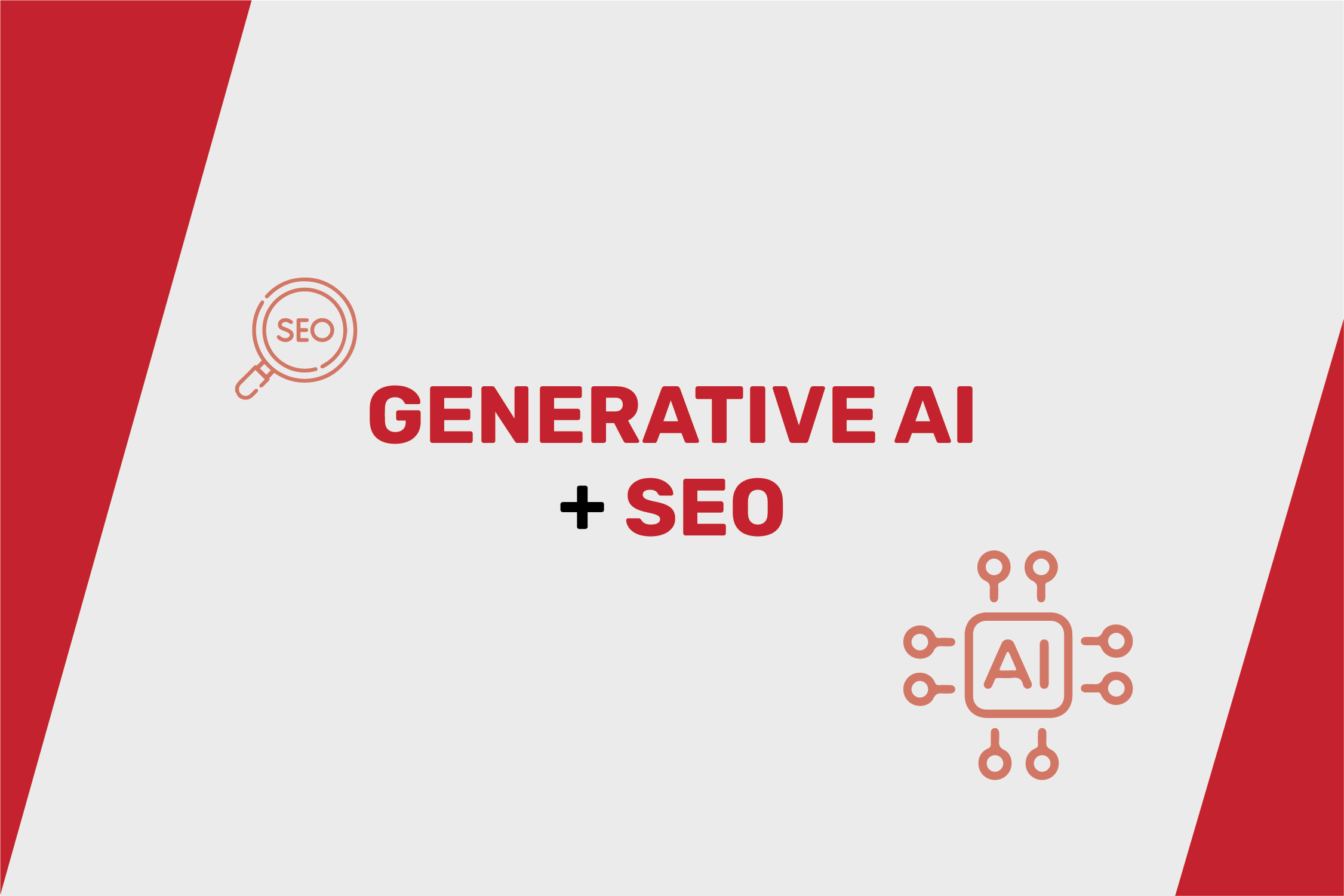|
Getting your Trinity Audio player ready...
|
In the rapidly evolving world of digital marketing, new technologies are constantly reshaping the ways we approach content creation and optimization. One of the latest innovations that is causing a stir is Generative Engine Optimization (GEO). GEO is an advanced approach that leverages AI and machine learning to optimize content for search engines and user engagement. This technology is becoming increasingly crucial for businesses striving to stay ahead in the digital age. By using GEO, businesses can create more targeted, personalized content that resonates with their audience, leading to improved visibility, higher engagement, and ultimately, better business outcomes. As businesses need to remain agile and adaptive in the highly competitive digital landscape, understanding and embracing the potential of GEO is essential for success in the modern era of digital marketing.
Read: Search Engine Optimization (SEO) vs. Generative Engine Optimization (GEO)
Understanding Generative AI
Generative AI, or Generative Adversarial Networks (GANs), is a type of artificial intelligence capable of autonomously creating content, such as text, images, music, and code. These systems use complex algorithms and machine learning models to generate new data based on the patterns and structures they have learned from existing data. Examples of generative AI technologies include GPT (Generative Pre-trained Transformer) models like ChatGPT, which can produce human-like text and conversations. Another example is DALL-E, which is capable of creating images from textual descriptions. These technologies have significant implications across various industries, including art, design, content creation, and even software development.
The Evolution of SEO to GEO
Traditional SEO, or Search Engine Optimization, has long been the cornerstone of digital marketing. It encompasses a range of strategies and techniques geared towards enhancing a website’s visibility on search engines. However, with the advancement of AI technology, there is a notable shift in focus. The emphasis is moving from the conventional approach of optimizing content for search engines to a more innovative method of generating optimized content through AI. This emerging approach is commonly referred to as Generative Engine Optimization (GEO), and it represents a significant evolution in the digital marketing landscape.
Key Components of GEO
To understand how GEO works, we need to look at its core components:
- Natural Language Processing (NLP): NLP allows AI to understand and generate human language. It’s the backbone of many GEO tools, enabling them to create content that reads naturally and engages readers.
- Machine Learning Models: These models learn from vast amounts of data to predict and generate content that aligns with user intent and search engine algorithms.
- Content Generation Algorithms: These algorithms ensure that the generated content is not only relevant and accurate but also optimized for search engines.
How GEO Works
GEO operates through a multi-step process:
- Data Collection and Analysis: GEO systems gather and analyze data from various sources, including search trends, user behavior, and existing content.
- Generating Optimized Content: Using the insights from the data, the AI generates content that is both relevant to the target audience and optimized for search engine algorithms.
- Real-Time Adaptation: GEO continuously monitors content performance and adapts in real-time to maintain or improve search rankings.
Benefits of GEO Implementation:
The adoption of Generative Engine Optimization offers a plethora of benefits for businesses seeking to elevate their digital marketing efforts and drive sustainable growth.
Advantages of Incorporating GEO into Marketing Campaigns:
- Enhanced Personalization: GEO enables businesses to create highly personalized content tailored to the unique preferences and behaviors of individual users, fostering deeper connections and driving engagement.
- Improved User Experience: By delivering relevant and timely content across multiple touchpoints, GEO enhances the overall user experience, reducing bounce rates and increasing retention.
- Increased Conversion Rates and ROI: By targeting the right audience with the right message at the right time, GEO maximizes conversion rates and returns on investment, delivering tangible results for businesses.
Practical Tips for Implementing GEO Techniques:
- Harness the Power of Data: Invest in robust data analytics tools to gather insights into consumer behavior, market trends, and competitor strategies.
- Leverage AI and Machine Learning: Embrace AI-powered technologies to automate content generation, optimize marketing campaigns, and personalize user experiences.
- Prioritize Continuous Optimization: Adopt a data-driven approach to optimization, continually refining strategies based on real-time insights and performance metrics.
Challenges in Implementing GEO
Despite its benefits, GEO comes with challenges:
- Data Privacy Concerns: Collecting and using data responsibly is critical to avoid privacy issues.
- Algorithm Transparency: Understanding how AI algorithms make decisions is crucial for maintaining trust and accountability.
- Maintaining Content Quality: Ensuring that generated content maintains a high standard of quality and accuracy can be challenging.
Best Practices for GEO
To effectively implement GEO, consider these best practices:
- Ethical Considerations: Always prioritize ethical standards in data collection and content generation.
- Regular Updates and Monitoring: Continuously update your GEO tools and monitor their performance to ensure optimal results.
- Collaboration with Human Experts: Combine AI capabilities with human expertise to refine and enhance the content.
GEO Tools and Technologies
Several platforms and tools can help integrate GEO into your digital strategy:
- Popular GEO Platforms: Tools like OpenAI’s GPT, Jasper, and Copy.ai are leading the charge in generative content creation.
- Integrating GEO with Existing SEO Tools: Combining GEO tools with traditional SEO software can provide a comprehensive approach to content optimization.
Future of GEO
Looking ahead, the future of GEO is promising:
- Predicted Advancements: We can expect more sophisticated AI models and tools, leading to even more effective content generation and optimization.
- Role of AI in Content Strategies: AI will continue to play a crucial role in shaping digital marketing strategies, making it essential for businesses to stay updated on the latest developments.
Comparing GEO with Traditional SEO
Understanding the differences between GEO and traditional SEO is key:
- Key Differences: While traditional SEO focuses on optimizing existing content, GEO generates new, optimized content from scratch.
- Situations Where GEO Excels: GEO is particularly effective in rapidly changing industries where staying ahead of trends is crucial.
Impact of GEO on Digital Marketing
GEO is set to revolutionize digital marketing:
- Changing Marketing Strategies: Marketers will need to adapt their strategies to leverage the full potential of GEO.
- Role of Marketers: Human marketers will still play a vital role, especially in guiding and refining AI-generated content.
Common Misconceptions about GEO
Clearing up misconceptions is important for understanding GEO:
- Myths and Facts: Address common myths, such as the belief that GEO will replace human writers entirely.
- Clarifying Common Doubts: Provide clear answers to common questions about how GEO works and its benefits.
Conclusion
Generative Engine Optimization represents the next frontier in digital marketing. By harnessing the power of generative AI, businesses can create highly relevant, engaging, and optimized content that meets the evolving needs of their audience. As we move forward, staying informed about GEO and its potential will be crucial for anyone looking to thrive in the digital age.
FAQs
What makes GEO different from traditional SEO?
While traditional SEO focuses on keyword optimization and backlinking, GEO takes a more holistic approach by analyzing vast amounts of data to generate personalized content tailored to individual user preferences and behaviors.
Can GEO replace human content writers?
While GEO can generate content, human writers are still essential for providing creativity, context, and oversight.
Is GEO suitable for all types of businesses?
GEO can benefit many businesses, but its effectiveness depends on factors like industry dynamics and content needs.
How does GEO impact search engine rankings?
By generating highly relevant and optimized content, GEO can improve a site’s search engine rankings.
What are the ethical considerations of using GEO?
Ethical considerations include data privacy, transparency of AI algorithms, and ensuring the quality and accuracy of generated content.
What are the key benefits of implementing GEO strategies?
The key benefits of implementing GEO strategies include enhanced personalization, improved user experience, increased conversion rates, and higher return on investment (ROI).
What role does artificial intelligence play in GEO optimization?
Artificial intelligence serves as the foundation of GEO optimization, enabling businesses to automate tasks, analyze data, and generate insights to inform marketing strategies and content creation.
How can businesses effectively implement GEO techniques?
Businesses can effectively implement GEO techniques by investing in data analytics tools, leveraging AI-powered technologies, and prioritizing continuous optimization based on real-time insights and performance metrics.





